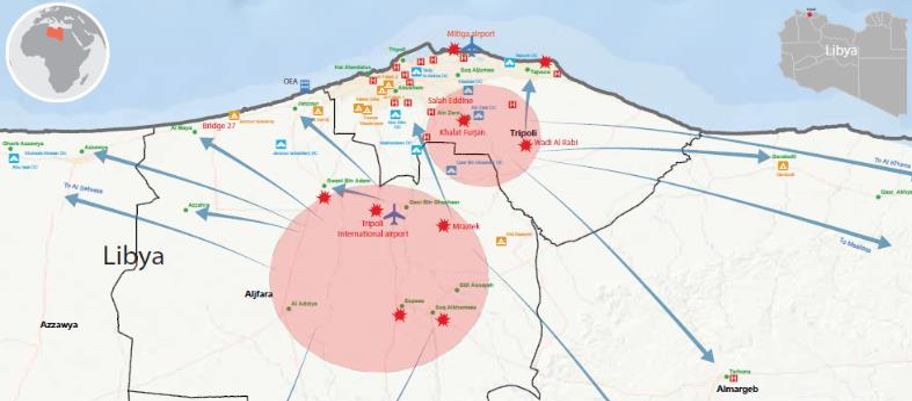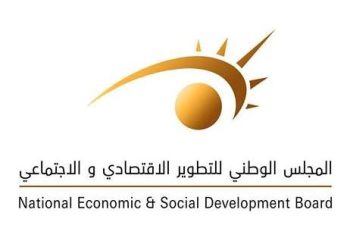By Sami Zaptia.

London, 14 April 2019:
A report by the UN Office for the Coordination of Humanitarian Affairs (OCHA) says that the past 24 hours saw another surge in civilians fleeing hostilities in and around Tripoli – 2,000 in the past 24 hours alone – with the number of people displaced now approaching 16,000. It adds that so far, some 4,000 people have been reached with some form of humanitarian assistance.
The OCHA reports that since the start of the current hostilities, WHO has confirmed 31 civilian casualties, including nine deaths. It says that concerns are high for families unable to leave conflict affected areas, with continued use of heavy weaponry reported in multiple locations, including Aziziya, Gharian, Gaser bie Ghashir, Swani and Wadi al-Rabea.
Meanwhile, WHO reported separately on its Facebook site that after a week of fighting, 75 people have been killed and 323 wounded, including seven civilians killed and 10 wounded. It is noted that the Serraj Ministry of Health has stopped publishing daily death and casualty numbers. The Khalifa Hafter-led LNA side of the conflict gives no death or casualty figures.
The OCHA report says that it is deeply concerned by reports of a school building damaged by an airstrike in Ain Zara, where no casualties were reported. It says that an electrical station in Ain Zara was reportedly also struck. The report reminded that global evidence shows that, when explosive weapons are used in populated areas, the vast majority of those affected are civilians – during as well as in the aftermath of conflict.
The report says that another two ambulances were damaged in context of the hostilities on 13 April, bringing the total number of ambulances struck by weaponry since the beginning of the current hostilities to eight. Damage to ambulances not only endangers health workers, but also hampers efforts to help casualties.
The humanitarian community continues to call on all parties to the conflict to uphold their obligations under international law to refrain from targeting educational and health facilities and personnel as well as civilian infrastructure. Medical facilities, medical personnel and medical transport must be respected and protected in all circumstances.
More than 1,000 refugees and migrants are thought to be trapped in detention centres in Gharyan and Qasr bin Ghashir, in close proximity to ongoing hostilities. Already among the most vulnerable populations in Libya, this group now faces the risk of becoming caught in cross-fire. Detainees at Gharyan report that no drinking water is available at the facility.
The report says that Libya faces a complex and protracted humanitarian and protection crisis, as a result of armed conflict, the breakdown of public service provision and governance and economic challenges.
It says that an estimated 823,000 people, including around 248,000 children, are in-need of humanitarian assistance in Libya as a result of persisting political instability, conflict and insecurity, the breakdown of the rule of law, a deteriorating public sector and a dysfunctional economy. People in-need of assistance include internally displaced persons, returnees, non-displaced conflict affected people and host communities, and refugees and migrants.
Meanwhile, UNSMIL today warned that the bombing of schools, hospitals, ambulances and civilian areas is strictly prohibited by International Humanitarian Law. It said that it is monitoring and documenting all acts of war that violate this law in order to brief the Security Council and the International Criminal Court.
On Friday, the World Health Organisation (WHO) said that it feared outbreaks of infectious diseases due to dirty water and people fleeing the fighting around Tripoli. It said that it has about two weeks’ of emergency supplies for hospitals and health facilities.







